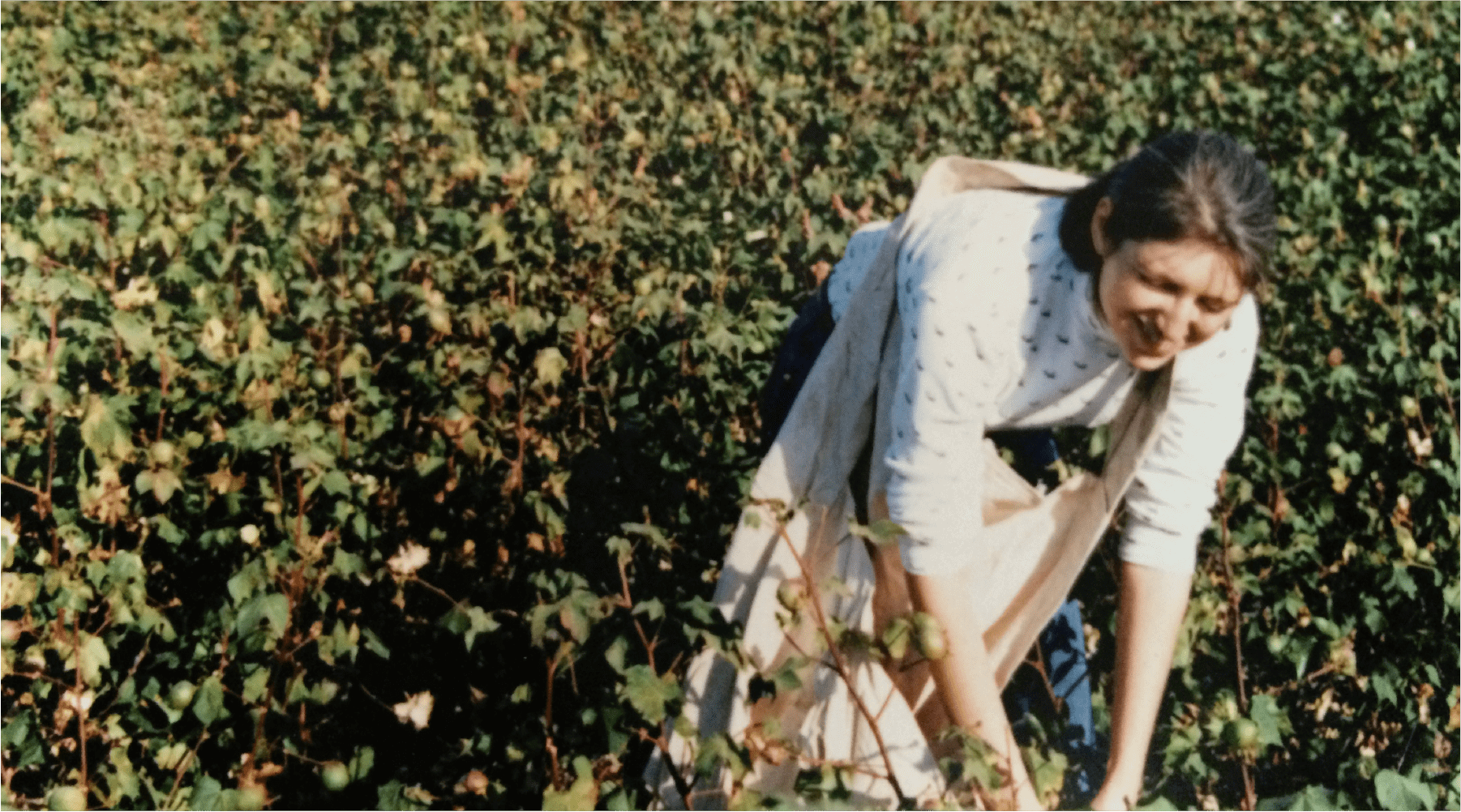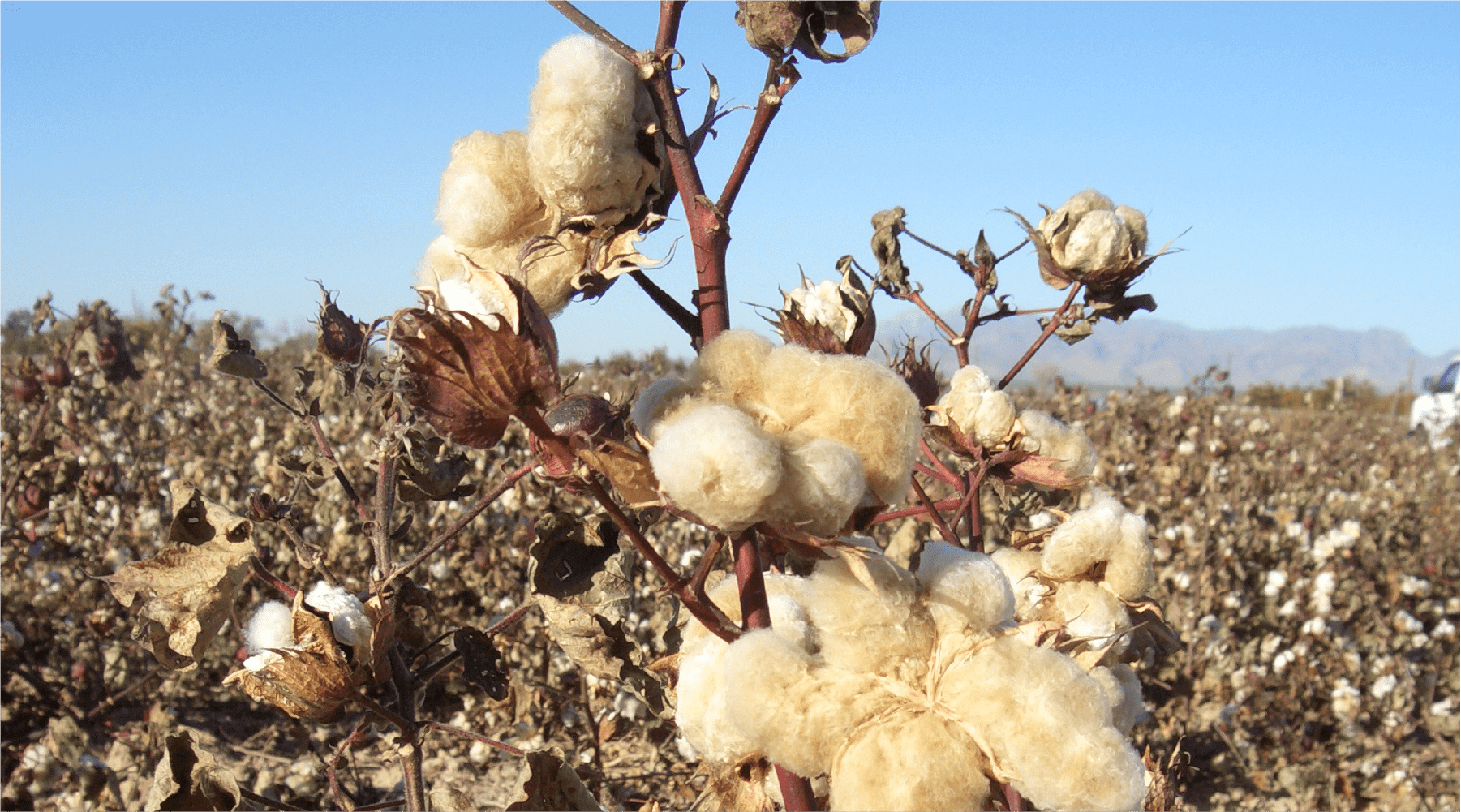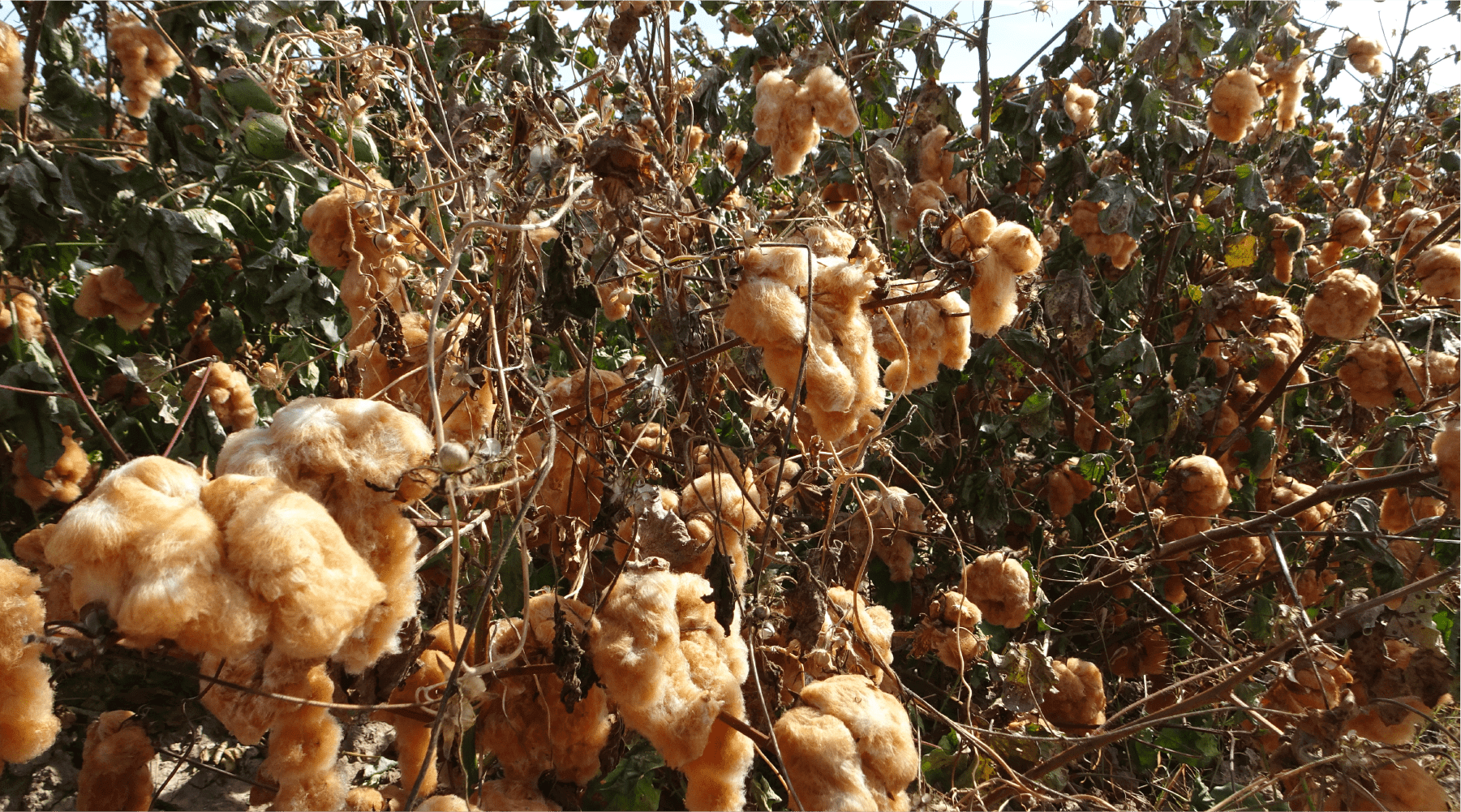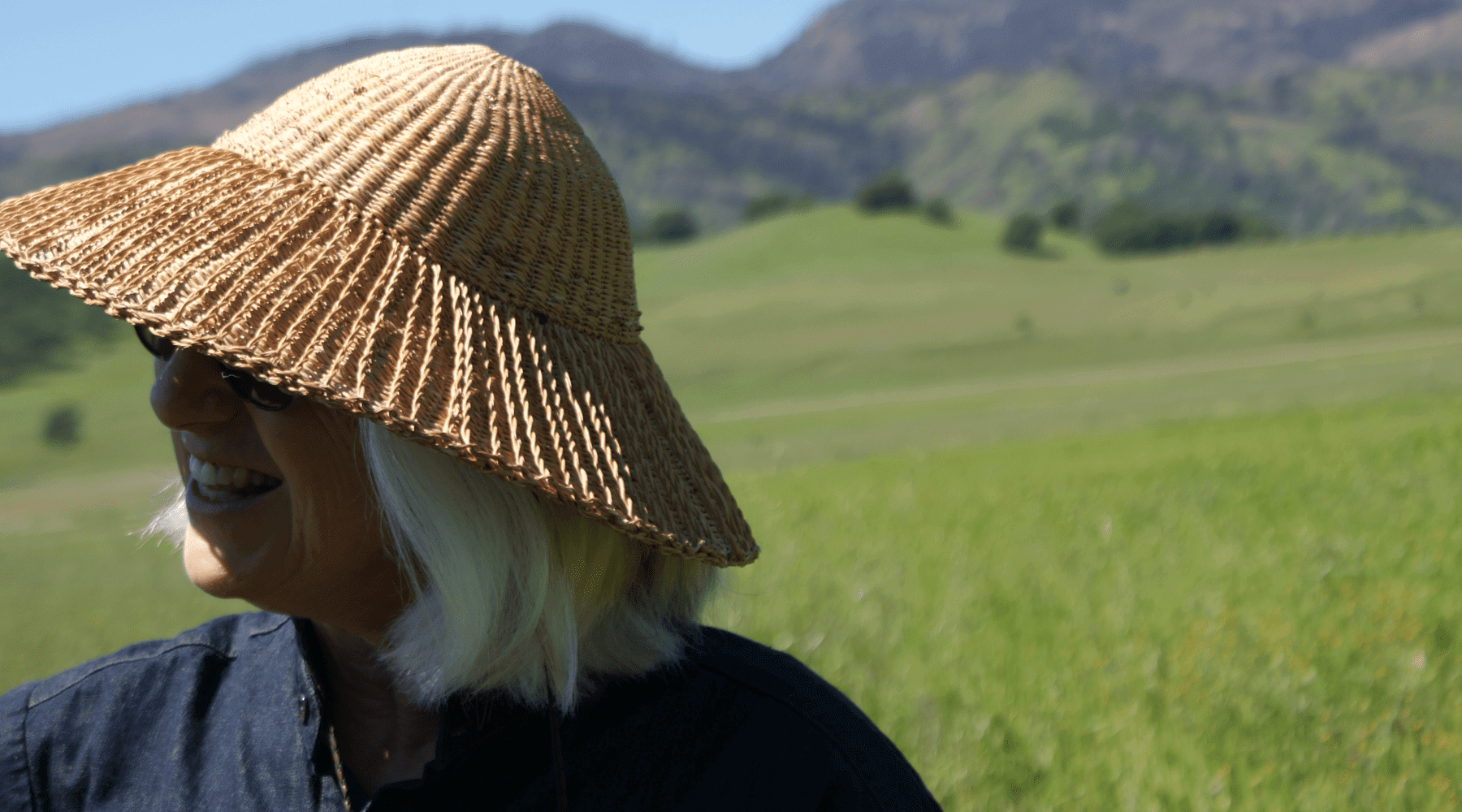1985年 茶色い綿花に一目ぼれした瞬間、サリーさんの波瀾万丈なストーリーはスタートします。
引き出しの中で眠っていた茶色い綿花は、繊維が太くて短く機械で糸にできない代物だったので、誰にも価値を認めてもらえませんでした。
茶綿の良さを訴えても相手にしてくれる人はおらず、サリーさんは私財を投じ、自分で畑を耕し、繊維の長い綿花と交配し、茶綿の品種改良を始めました。
茶色はタンニンによるもので、虫が付きにくく有機栽培に向いていたそうです。
茶綿には何種類か色が微妙に違うものがあり、私たちが使っているのは「コヨーテ」というカラーです。
2世代目には突然変異でグリーンのコットンボールが2つだけできました。これが緑綿の始まりです。
資金が底を尽きそうになりながら苦労を重ねましたが、90年代に入ると品質は向上し、日本の紡績企業やアメリカの大手デニムブランドに採用されるまでになりました。
しかし、良い時期は長く続きませんでした。
有名になると大規模な農場から「白い綿が汚染されると困る。」と圧力がかかり、栽培していたカリフォルニア州の政府から立ち退きを求められ、アリゾナ州やテキサス州に追われました。
2000年代に入ると取引していた紡績企業が倒産、デニムブランドの経営悪化による方針転換など順調だったビジネスも行き詰まり、窮地に追い込まれます。
行き先の無くなった茶綿は日本の紡績企業に紹介されました。
他の紡績企業が色綿を工場に入れることを拒む中、唯一手を挙げたのが大正紡績でした。
サリーさんとのお付き合いはそれ以来で、私たちは有色綿だけではなく、アメリカで契約栽培するオーガニックコットンはすべてサリーさんにお任せしています。
良い時も悪い時もサリーさんはすべてリサーチの為という姿勢を崩さず、今もカリフォルニアで羊を飼い、小麦を育てる生活を続けています。
The dramatic story of Sally Fox began in 1985, the moment she fell in love at first sight with a brown cotton bloom.
The brown cotton, which had been resting in a drawer, had thick, short fibers and could not be spun into yarn by machine. As such, no one recognized its value.
Even when Sally tried to advocate for the quality of the brown cotton, no one would listen. Sally decided to invest her private funds, cultivate a field herself, and began improving the brown cotton variety by crossbreeding it with long-fiber cotton.
The brown color is due to tannin, which naturally repels insects, making it suitable for organic cultivation. There are several subtly different shades of brown cotton, and the color we use is called "Coyote." In the second generation, two green cotton balls suddenly appeared as a spontaneous mutation. This was the start of the green cotton variety.
Sally faced numerous struggles, at times nearly running out of funds, but in the 1990s, the quality improved, and her cotton was adopted by a Japanese spinning company and a major American denim brand.
However, the good times did not last long.
As her cotton became famous, pressure mounted from large-scale farms who were concerned about the contamination of brown cotton and she was forced to relocate to Arizona and Texas.
In the late 90's, the smooth-running business stalled. All the spinning companies she was dealing with went bankrupt, and a policy change due to the financial deterioration of the denim brand drove her into a corner.
The brown cotton, with nowhere to go, was introduced to Japanese spinning companies. While other companies refused to bring colored cotton into their factories, Taishoboseki was the only one to accept it.
Our relationship with Sally began then, and we now entrust her not only with colored cotton but with all the organic cotton we contract-grow in the United States.
Through both good times and bad, Sally has maintained the position that everything is for the sake of research. She continues her life today in California, raising sheep and growing wheat.
To us, she is like the North Star - a guiding light. Her unwavering dedication inspires us, and we will continue to move forward alongside her as we shape the future together.







